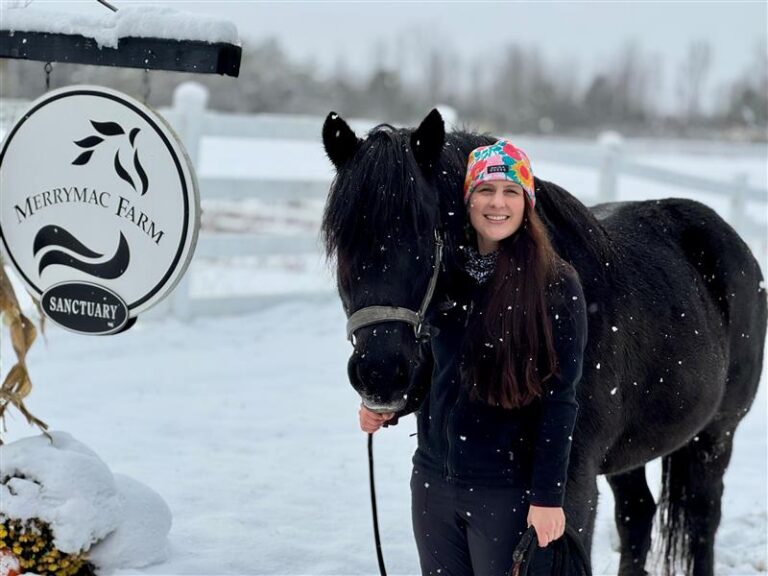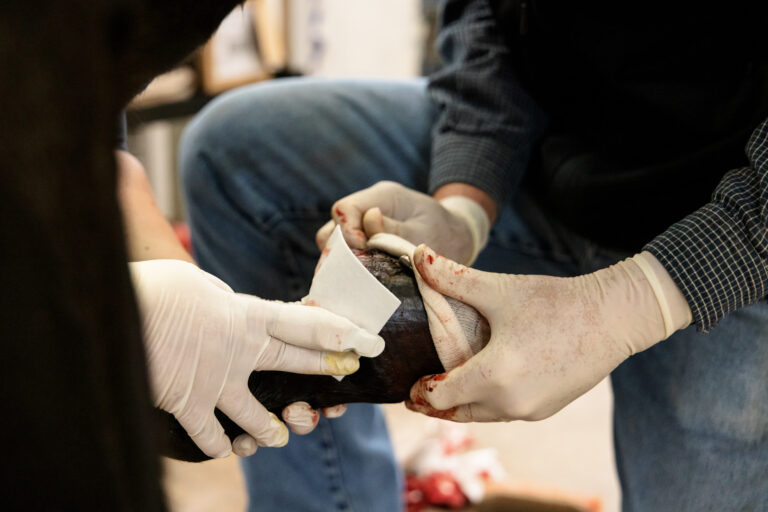
Approximately 40% of AAEP members are solo ambulatory veterinarians. They might or might not have a technician or assistant to help with the medical side of practice. They might or might not have someone to help with billing, scheduling, and the business aspects of practice. What this means is that solo practitioners are very busy, they are often behind in recordkeeping, and they are very stressed.
Many equine veterinarians have moved—or are moving—to requiring payment at time of service. This keeps accounts receivable manageable and prevents owners from using their veterinarians as a bank or money lender.
At the 2022 AAEP Convention, Linda Hagerman, DVM, owner of Tacoma Equine Hospital in Washington state, presented on “How to Decrease Accounts Receivable in an Ambulatory Practice.”
In the introduction to her paper, Hagerman noted, “Managing the business while juggling the challenges of daily appointments in addition to emergencies is difficult. Consequently, the overall success of any practice is sometimes determined more by business skills than veterinary skills. This paper will discuss some processes that may help facilitate collecting money at time of service and therefore keeping accounts receivable low.”
Gold Standard of Payment
!["Veterinarians have been trained to excel in medicine but not [trained] as well in business," said Dr. Linda Hagerman.](https://s3.amazonaws.com/wp-s3-equimanagement.com/wp-content/uploads/2024/03/20133459/money-stethescope-iStock-651143122-1024x631.jpg)
In an EquiManagement roundtable on “The Balance of Passion and Practice in Equine Veterinary Life” sponsored by CareCredit, a cross-section of equine veterinary industry experts gathered to discuss the current state of business, patient care, and client payment issues. The participants also offered guideposts to what they said could be a better future for equine veterinarians.
To kick off the roundtable discussion, participants were asked what should be the norm, or “gold standard,” in how clients pay equine veterinarians for services. Wendy Krebs, DVM, a partner and co-owner at Bend Equine Medical Center in Oregon, did not hesitate in her response: “The short answer is payment at the time of service.”
In her AAEP paper, Hagerman said that veterinarians need to develop the “culture” of collecting payment at time of service early in their careers. “This is a philosophy that should be in place at the start of your business,” Hagerman advised. “Both solo practitioners and group practices can establish this culture.”
She said that because of the high debt load carried by most young veterinarians, they often are better at thinking about being paid. “So, harness their motivation and that energy,” advised Hagerman.
In a group practice, she suggested fostering a team approach by talking about accounts receivable and strategizing easy ways to get paid. However, she advised having one person lead the collections strategy.
AAEP Treasurer and veterinary business consultant Amy L. Grice, VMD, MBA, said that horse owners need to prepare for care. “It’s just like when you go to the grocery store—you don’t get to leave with your groceries without paying for them,” she said.
Whether by accident or on purpose, many clients will get to the end of your farm call and not have a payment form with them. In this situation, having a credit card on file is important to the business side of the veterinarian/client relationship.
If a client says he or she left the checkbook, billfold, or credit card somewhere else, the veterinarian can just say, “Then we’ll charge it to the credit card on file.”
Another scenario that often happens is that the client has a payment form in close proximity (say from the barn to the house or even just to the vehicle parked at the other end of the barn), but the veterinarian is running behind on farm calls. The veterinarian might say, “I’ve got to go on to the next call. We’ll send a bill.”
That results in a minimum of a 30- to 60-day accounts receivable. The veterinarian turns the invoice into the office. The office sends it out on the next billing day. The client has 30 days to pay. And that’s if everything goes according to plan.
As Kyle Palmer, hospital administrator for VCA Salem Animal Hospital in Oregon, noted in the roundtable: “There’s nothing—nothing—better in terms of collecting the debt than not incurring it in the first place.”2
Cost Transparency
Providing clients transparency with regard to costs is important. Hagerman said that transparency helps owners prepare for the expense so they aren’t surprised when they get a bill.
“During the appointment scheduling call or text, have the receptionist give the client an estimate and get a verbal approval that the estimate is agreed to,” recommended Hagerman. “During the appointment, keep the client informed of the charges. And when recommending other treatments, make sure they know how that will affect the bill and get verbal approval to continue.”
Hagerman noted that one positive that came out of the pandemic was having a “touchless payment protocol,” meaning many clients had credit cards on file. “Take advantage of this,” she said.
Tips for the Ambulatory Practitioner

In her presentation, Hagerman offered a number of tips from her experience:
- Set aside a day to work on the business (i.e., no appointments). Set that expectation with yourself and your clients.
- Accept the CareCredit credit card, cash, and/or debit/credit card options, as well as PayPal and other online options.
- Be prepared to text or call clients who owe money relentlessly. (In her presentation, Hagerman said that in some areas that it’s legal to contact clients in arrears once per day.)
- Go to small claims court or send clients to a collection agent if the clients don’t pay. “The news will travel that your practice expects to get paid, and this will naturally, eventually, weed out those who don’t intend to pay,” Hagerman said.
- Use card readers in the field to get credit or debit card payments.
- Do not accept checks from first-time clients.
- Be suspicious about a new client calling with an emergency that has you driving past two or three other veterinarians on the way to his or her farm.
- Hagerman said: “Be known as ‘expensive.’ Clients expect to pay ‘a lot’ when they see you and are often overprepared for their bill, even though in reality it’s not much more than other clinics. The reputation has created the value.”
- Join a Veterinary Management Group (VMG) or hire a private equine veterinary consulting firm to help analyze your practice, keep you engaged with the process of bettering the business, hold you accountable to work on the practice, and give you different ideas of how to do business.
Invoicing Issues
Krebs said her practice’s biggest challenge has been getting invoicing completed by doctors in a prompt fashion.
“Honestly, that adds more to our accounts receivable than clients not paying,” she said. “So, we are working really hard at trying to get invoicing done by the end of every day. It doesn’t always happen, but having shifted to the cloud-based software has helped us with that.”
Krebs said that her practice’s doctors always have a support staff member with them who helps with invoicing.2 “It doesn’t matter which of them enters the invoice originally, we always have two people check that it is correct,” she said. “It’s amazing how much that adds. I think probably 75% of the time it’s an additive process and the technician will be like, ‘But you handed them a tube of bute at the end of the appointment,’ or ‘You gave them three tubes of Banamine for their first aid kit.’ ”
Grice said research has shown that the more time that elapses between the service and the writing of the invoice, the more the percentage of missed charges rises.
(Editor’s note: You can find many more business tips by downloading a PDF of EquiManagement’s Business Special Issue 2022 brought to you by CareCredit.)
Take-Home Message
The culture and values of your practice—whether solo or multi-vet—will determine how profitable you are. Your profitability will play a big role in your stress level.
If you take or keep any horse-owning client no matter their ability or willingness to pay, then you might not be in practice very long.
As Hagerman said, “Veterinarians have been trained to excel in medicine but not [trained] as well in business. Decreasing accounts receivable by collecting payment at time of service and having a low accounts receivable will create a profitable practice that offers good work/life balance.”
This article originally appeared in the 2024 Special Issue: Help Horse Owners Prepare for Care, brought to you by CareCredit. You can download and read the entire issue here.




